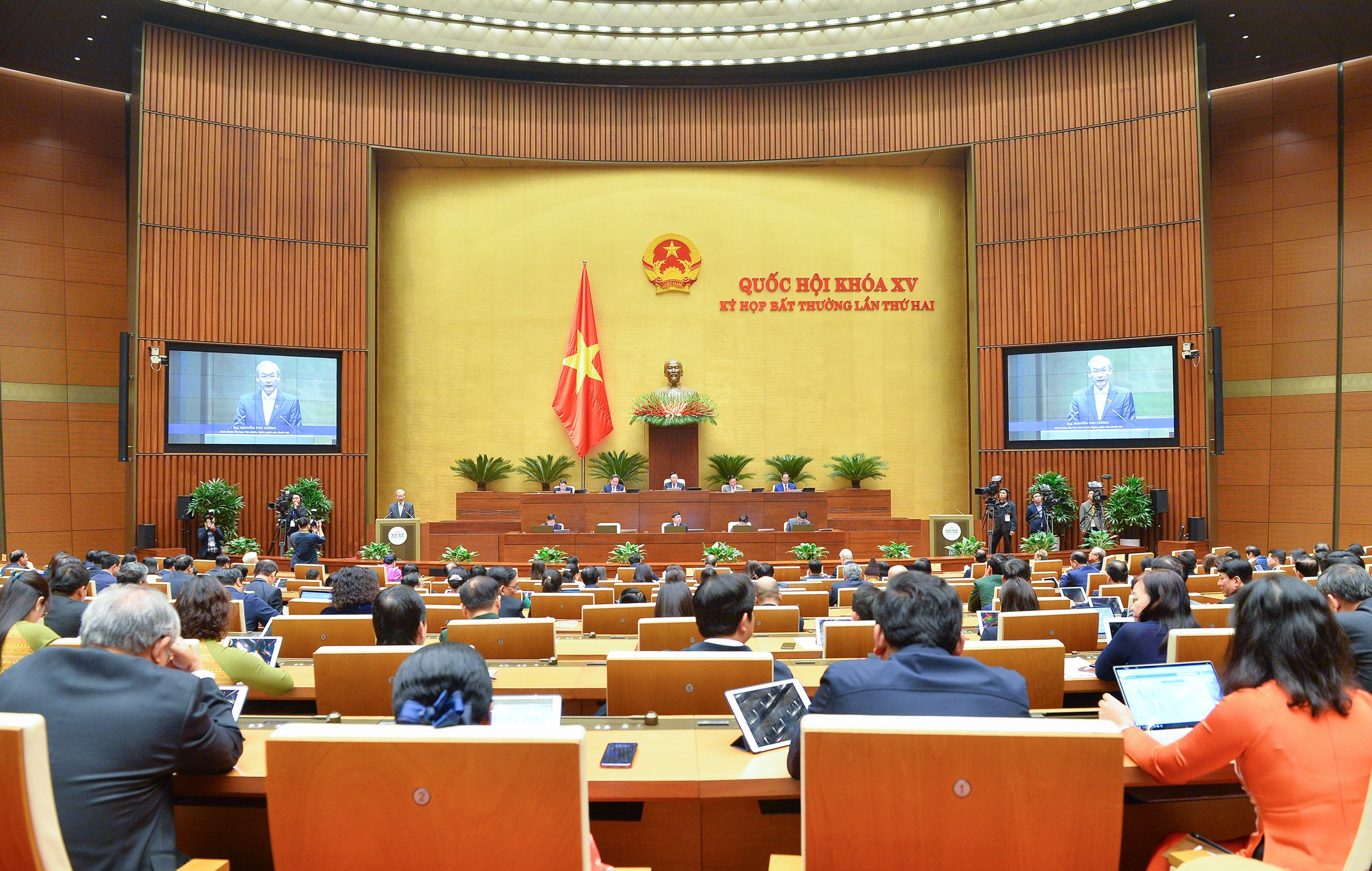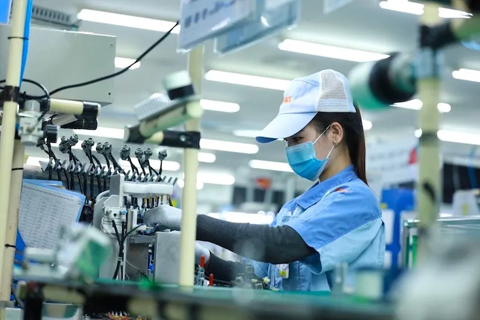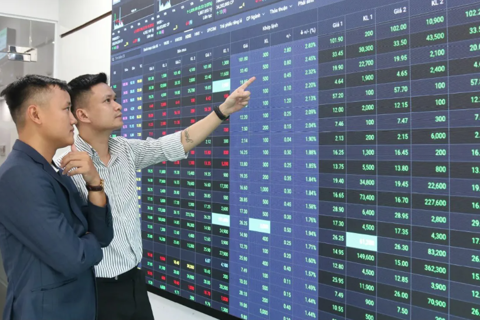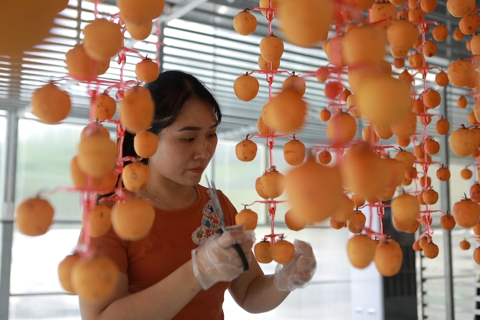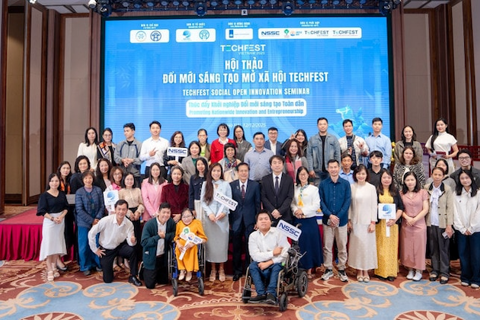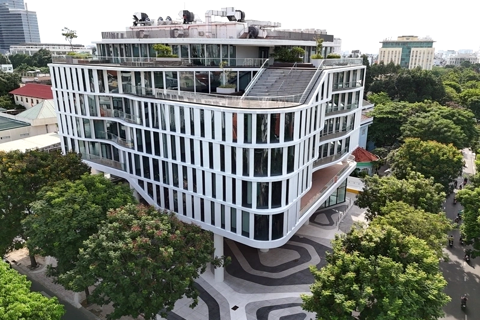Vietnam strives to become developed country by 2050
The average GDP growth should be around 7% for 2021-2030, and GDP per capita would reach US$7,500 by 2030.
Vietnam aims to become an upper-middle-income country by 2030 and a high-income country by 2050.
| Overview of the session. Photo: quochoi.vn |
The target was set in Vietnam's national master plan for 2021-2030, with a vision to 2050, for which the National Assembly passed a resolution on January 9 by 90.5% of deputies present.
The national master plan is the basis for ministries, provinces, and localities to map out their respective planning at the provincial/sectoral level.
Under the resolution, Vietnam should become a developing country with a modern industrial base and upper-middle income level by 2030.
To ensure this objective, the average GDP growth should be around 7% for the 2021-2030 period, and GDP per capita would reach US$7,500 by 2030.
The proportion of the services sector in total GDP is estimated to hit 50%, the industrial-construction sector over 40%, and agro-forestry-fishery below 10%.
Total labor productivity would average 6.5% annually, and the total factor productivity (TFP) contribution to growth would be over 50%.
The resolution aims for Vietnam's economic growth during this period to be based on science, technology, innovation, and digitalization; the urbanization rate to exceed 50%; and at least three to five urban cities to reach regional and international levels, serving as the backbone of global urban networks.
By 2050, Vietnam will become a developed country with a high-income level based on digital, green, and circular models.
"Science-technology and innovation are the main drivers of growth during this period," the resolution stated.
As such, Vietnam would be among Asia's most advanced industrial countries and a regional and global financial center.
Vietnam is expected to have a strong maritime economy and become a maritime economic center of the Asia-Pacific.
During this period, the estimated GDP growth should average 6.5-7.5% per annum, and by 2050, the GDP per capita to reach $27,000-$32,000, with the urbanization rate by 2050 at 70-75%.
The resolution also expected a high living standard for the people, as they would enjoy high-quality social services, as well as sustainable social welfare.
A high-quality environment should also lay the foundation for Vietnam to promote a low-carbon economy and realize a net zero carbon emission by 2050.
Regarding the urbanization target of 70-75% by 2050, the Chairman of the National Assembly’s Economic Committee, Vu Hong Thanh, said this is in line with the global trend and the country’s vision for development.
Statistics from the World Bank in 2021 stated the average urbanization rate of high-income countries was 81.5%, while a UN study anticipated the global average urbanization rate until 2050 would be 68-80%.
Promoting development spaces
The national master plan for 2021-2030, with a vision to 2050, envisages dividing the country's development areas into six socioeconomic zones, four growth poles, and economic corridors.
Under the plan, six socio-economic zones would include the northern sub-mountainous and mountainous region (14 provinces/cities); the north central coast and coastal (14 provinces/cities); the central highlands (five provinces/cities); the southeast region (six provinces/cities); and the Mekong delta region (13 provinces/cities).
Four growth poles are spread in the north, central, south, and Mekong delta, while the economic corridors would be established in the direction of North-South, connecting all growth poles and major urban and economic zones.
The Government expects to mobilize funds from the state budget, the private sector, and foreign loans to carry out the national master plan.
Under the resolution, the Government is set to speed up the state divestment and privatization of state firms to raise financial sources.
Meanwhile, it would draw up incentive policies to better utilize land resources for socio-economic infrastructure development.
Another priority is to complete the legal framework for capital markets, including securities and venture capital investment, to mobilize mid- and long-term capital for development.
In terms of foreign lending, the Government would seek loans with preferential rates to finance key fields with high spillover effects, such as renewables, culture, education, healthcare, science, technology, and innovation.

